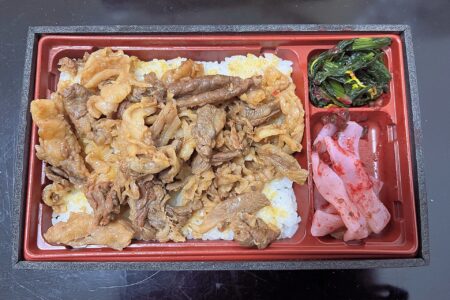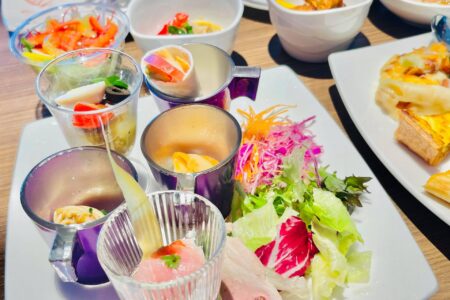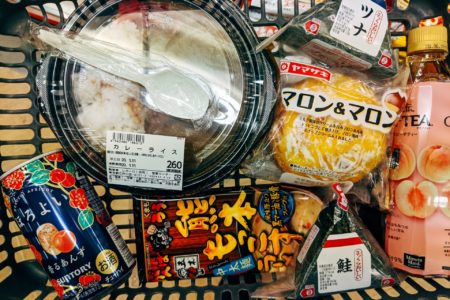Cooking in Japan Without Going Broke

Top photo: 78design on PhotoAC
If you’re planning to move to Japan, it’s good to be prepared and do some research first. Get to know the cost of living in Japan, and that if you want to live anywhere near a city center or major station, you will be shelling out more in rent. The cost of living in Japan is said to have long been one of the highest in the world. Although the country has become more affordable in recents years, it’s still not the cheapest place to call home.
As a foreigners living here in Japan, it is common for many of us to send money to our loved ones back home, pay off debts from university, etc. That’s why sometimes it can be very difficult to save money. Coupled with everything here in Japan seeming expensive (food, housing, transportation and so on) it can be easy to feel overwhelmed.
But the truth, as those of us who live here for years come to learn, is that Japan has as many deals, shortcuts and tips for saving some extra yen as anywhere else. This is especially true when it comes to food. One of the most important needs of every person is food. We need to eat to live, after all!
Here are some ways I have used to minimize expenses on food. It should be noted that these are tricks I used in the early days, before truly settling in; once you have accumulated savings, you will be able to enjoy a little more luxury in all aspects of life, including eating (everyone deserves to try Kobe Beef at least once in life, after all). But for the newcomers- those just arrived in Japan or those coming soon- these are the tips that will get you by.
1. Shop near closing time
The best time to go to the supermark if you want to get a discount is at the evening. Most supermarkets will start adding a discount sticker on food products. Chances are if you go shopping anytime after 6 pm, you’ll see a staff member going around putting stickers from around 7:00 pm for a 10% discount, then after one hour, they change it to 20%. Starting from 8:30 – 9:00 pm, they put between a 30-50% discount sticker on.
The discounted items will generally be anything pre-made or prepared on the day (bento, meats, vegetables) with a short shelf life, and they can get cleared out pretty quickly as there will be many other shoppers hovering around waiting for that perfect deal. You can easily get double the amount of items you would earlier in the day, at the same cost.
2. Make a shopping list
While it’s fun to go and just grab whatever you see during the above, sometimes you may end up with more of something than you’d actually eat (discount karage is great, but you won’t want to eat it 5 nights in a row.) So be sure to make a list of things that you need, and try to buy enough for several days to a week. There will always be time to splurge on something new and exciting once you’ve gotten the basic weekly shopping plan down.
3. Get point cards and start racking up points
Having a point card will help save some money, sometimes give you coupons, and you can save up points to use in exchange of money. Always be sured to make a point card where you often buy your food at supermarket, and remember to use it. That way, you get points for every purchase, and when you accumulate enough, you can use them for other payments.
Note that some cards with be specific to one store chain, while others can be used across multiple shopping venues (such as a Ponta or T-Point card). In this modern era, some ‘cards’ are digital, so always keep your phone handy if the ‘card’ is an app.
4. Actual Cooking
As often as possible, try to cook at home over buying pre-made meals at convenience stores. You can save more money when you cook your own food, and you’ll often be able to put together some healthier meal options. If you cook 1 cup of rice alongside vegetables and fish/meat, this will cost much less. You can also prepare food for several meals all at once and refridgerate, which makes it practical as well. For a little more about cooking on the cheap, see our guide here.
5. Using the Kakeibo method
Kakeibo is a Japanese art of budgeting and saving money. It involves keeping a journal of all your income and expenditures so that you can see where you’re spending unnecessary money. It’s the ultimate form of household financial management, and a must-do when you (hopefully, some day) have more than one mouth to feed!
Photo & Information Credits:
Top photo: 78design on PhotoAC
Some information in this article was sourced from www.webmagazine.com. All other content (text) created by the original author and © 2023 MUSUBI by Borderlink
RELATED
-

Before the Kitchen: ALT Eating
Top Photo: santamaさん on PhotoAC When you first come to Japan as a Borderlink ALT, you may spend the first seve… -

Budget Buffet in Tokyo
Top Photo: TomiFactoryさん on PhotoAC Are you in Tokyo and hungry? Do you want to try different delicious dishes… -

Making Sense of Food Labels in Japan
Top Photo by Markus Winkler on Unsplash Undoubtedly, one of the most daunting tasks facing newcomers to Japan…
PEOPLE

R. Linia Onrac
From the Philippines
Has spent many years learning to get by in Japan!


